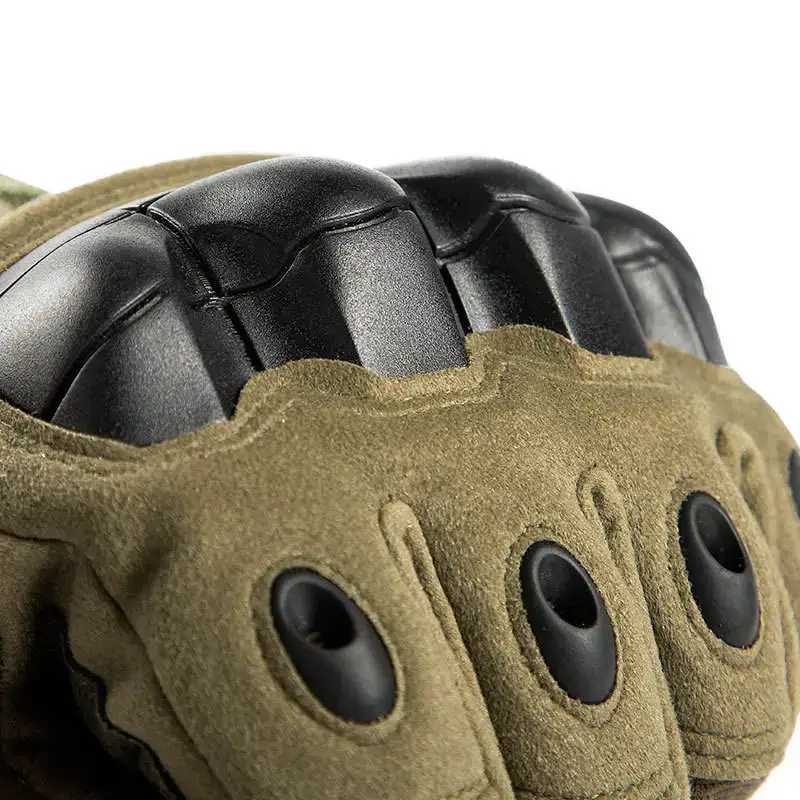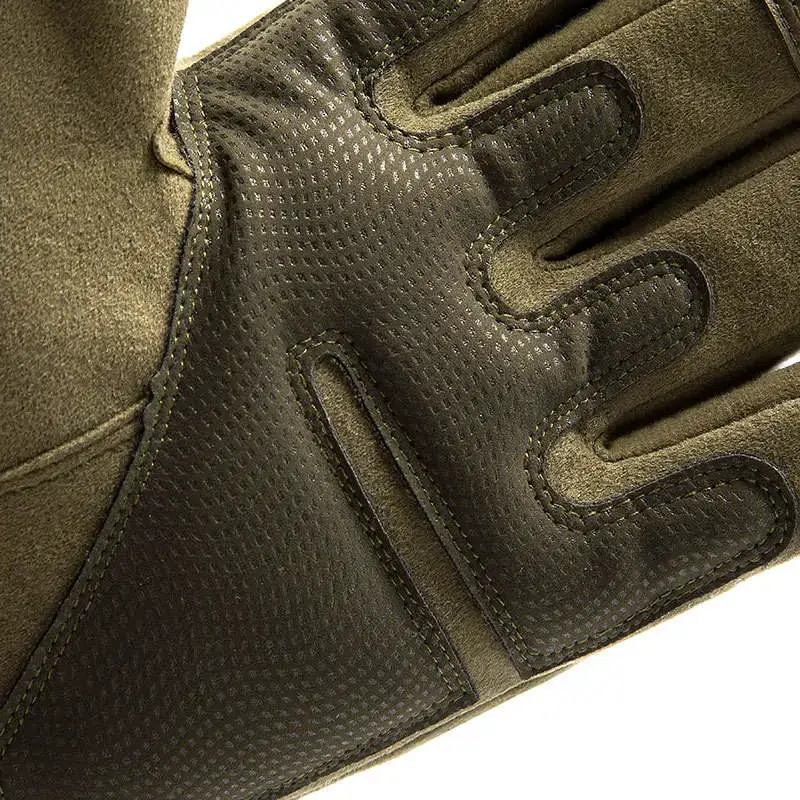Tactical gloves are a key component of gear for law enforcement, military, and security professionals. They need to protect hands from abrasions, impacts, and weather conditions while allowing precise handling of firearms, tools, and devices like touchscreens.
This guide covers materials, design features, and seasonal options to assist teams in selecting gloves suited to their operational requirements.
Material Breakdown: Leather vs. Synthetic
1. Leather Gloves
Pros:
- High durability and abrasion resistance.
- Adapts to hand shape over time for improved fit.
- Offers wind and water resistance when treated.
Cons:
- Heavier and less breathable than synthetics.
- Dries slowly when wet.
- May stiffen in extreme cold without maintenance.
Terbaik untuk: Tasks involving rough surfaces, such as breaching or rappelling.
2. Synthetic Gloves (Nylon, Polyester, Kevlar®)
Pros:
- Lightweight and breathable.
- Dries quickly and wicks moisture.
- Often includes stretch zones for flexibility.
Cons:
- Less resistant to sharp edges.
- Can degrade with prolonged UV exposure.
Terbaik untuk: Operations requiring mobility, like patrol or use in warm climates.
3. Hybrid Designs
These gloves combine leather palms for grip and durability with synthetic backs for breathability and flexibility. Some incorporate Kevlar® or Dyneema® threads for added cut resistance, useful in environments with glass or metal hazards.
 tactical glove with black knuckle guards
tactical glove with black knuckle guards
 a tan tactical glove on a hand
a tan tactical glove on a hand
Key Features to Prioritize
1. Touchscreen Compatibility
For teams using smartphones or tablets:
- Conductive threads (e.g., silver or carbon) in fingertips.
- Stitching designed for screen accuracy.
2. Weather Resistance
Winter Gloves:
- Insulation like Thinsulate™ or PrimaLoft®.
- Waterproof membranes such as Gore-Tex®.
- Extended cuffs to block snow or wind.
Summer Gloves:
- Breathable materials like nylon mesh panels for ventilation.
- UPF 50+ sun protection.
- Moisture-wicking liners.
3. Grip Enhancements
- Silicone Prints: Patterns on palms and fingers for control in wet conditions.
- Reinforced Palm Pads: Leather or rubber sections for durability during repetitive tasks.
4. Protective Elements
- Knuckle Guards: Thermoplastic rubber or carbon fiber for impact protection.
- Cuff Closures: Adjustable straps to keep out debris.
- Impact Padding: Foam or gel in high-contact areas like the palm.
Learn more about ANSI glove protection standards di sini.
Dexterity: A Critical Factor
Gloves that restrict movement can affect performance. Features to consider:
- Pre-Curved Fingers: Align with the hand’s natural position.
- Stretch Panels: Enhance flexibility between fingers or across the back.
- Slim Profiles: Reduce bulk with minimal seams and padding.
Example: A Midwest SWAT team noted improved reload speed after switching to gloves with articulated finger joints.
Seasonal Recommendations for Tactical Gloves
Below are key features to consider for each season.
Winter:
- Windproof, waterproof shell with Thinsulate™ insulation.
- Touchscreen-compatible fingertips.
- Reinforced palm for grip in cold conditions.
Summer:
- Nylon mesh back for ventilation.
- Silicone grip patterns to maintain control with sweaty hands.
- UPF 50+ sun protection.
All-Season:
- Goat leather palm with synthetic back.
- Waterproof liner.
- Removable inner layer for temperature adjustment.
Future Trends in Tactical Glove Design
- Smart Features: Sensors for vital signs monitoring or NFC tags for access control.
- Sustainable Materials: Use of recycled synthetics or bio-based leathers.
- Anti-Microbial Treatments: Coatings to reduce bacteria and odor.
Conclusion: Matching Gloves to Operational Needs
Tactical glove selection depends on specific mission conditions, such as weather, task type, and equipment use. Evaluating materials and features based on these factors helps ensure functionality and protection.
Ready to Equip Your Team? Contact us today for custom solutions dan bulk pricing tailored to your operational needs.


